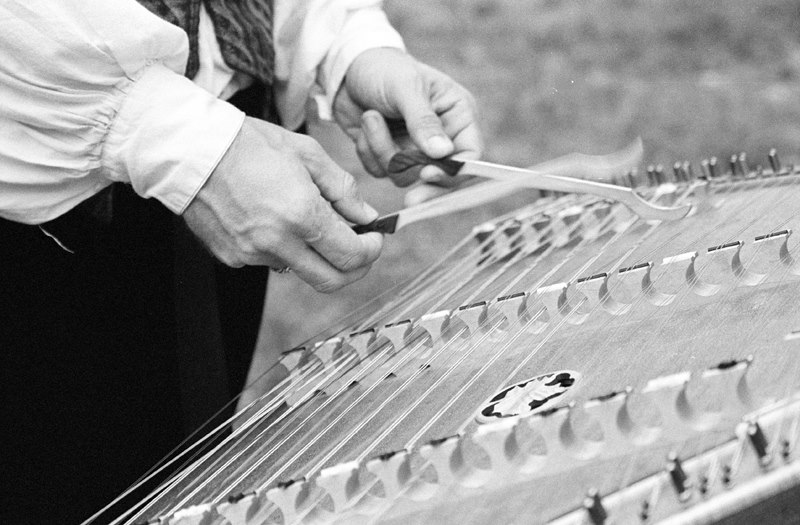|
The hammered dulcimer is a string instrument that is played by striking with wooden "hammers". It was invented in the Middle Ages, staying widely popular through the late 1800's and remaining a folk instrument today.
The dulcimer most likely originated in the Middle East, as a variation of the Ancient Greek psaltery, either in the Persian or Byzantine Empire. Crusaders brought it back to Europe in the twelfth century even as merchants took it east along the Silk Road to India and China.
Its popularity declined with the rise of the keyboard instruments but the dulcimer survived in various remote, typically mountainous, regions of the world. In the Middle East and India it is called the Santur, in Russia and Ukraine it is a Cimbalom, in Spanish and Italian it is a Salterio, in German it is a Hackbrett ("chopping block"), and the Chinese name it a Yangqin ("foreign instrument"). While some specifics vary between cultures (particularly shape, tuning, and number of strings per course), the basics remain constant.
David Kettlewell's Doctoral Thesis provides an excellent look at the history of the dulcimer, particularly concerning our earliest historical sources. For those looking into buying an instrument, Vince recommends dulcimers made by Dusty Strings, and his preferred online retailer is Elderly Music.
|

|